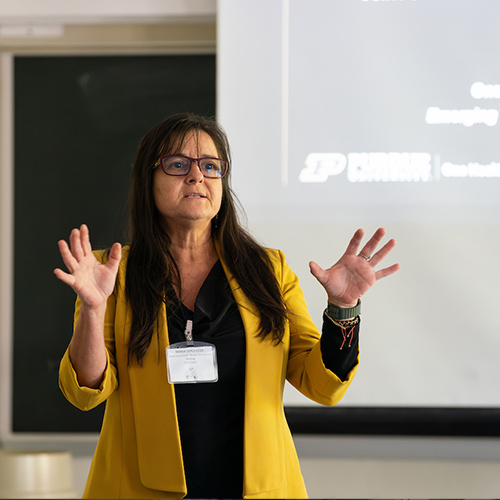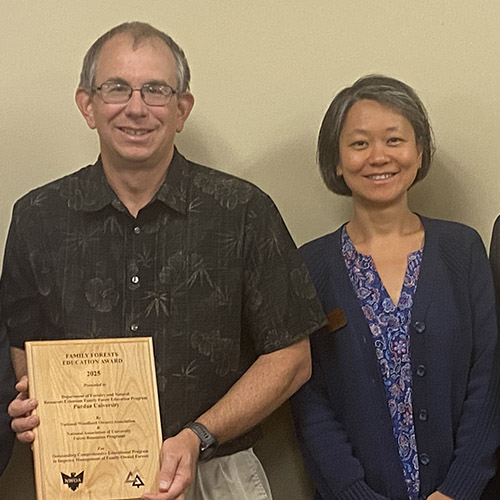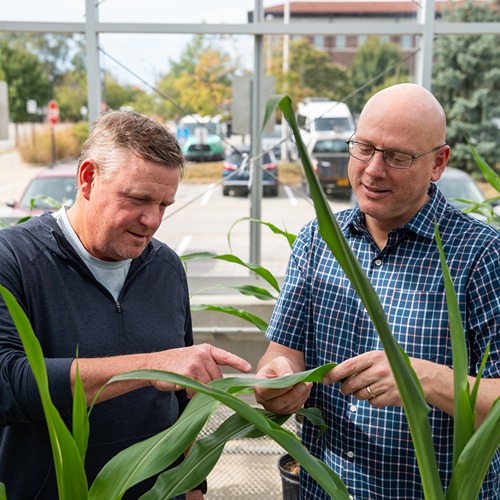Intro to Trees of Indiana: Sugar Maple
The classic and trusted book "Fifty Common Trees of Indiana" by T.E. Shaw was published in 1956 as a user-friendly guide to local species. Nearly 70 years later, the publication has been updated through a joint effort by the Purdue Department of Forestry and Natural Resources, Indiana 4-H, and the Indiana Department of Natural Resources, and reintroduced as "An Introduction to Trees of Indiana."
A printed copy of the full publication is available for purchase for $7 in the Purdue Extension Education Store. The field guide helps identify common Indiana woodlot trees.
Each week, the Intro to Trees of Indiana web series will offer a sneak peek at one species from the book, paired with an ID That Tree video from Purdue Extension forester Lenny Farlee to help visualize each species as it stands in the woods. Threats to species health as well as also insight into the wood provided by the species, will be provided through additional resources as well as the Hardwoods of the Central Midwest exhibit of the Purdue Arboretum, if available.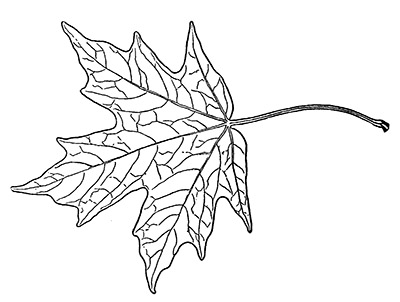
This week, we introduce the sugar maple or Acer saccharum.
This tree, also called hard maple, has simple leaves typically with five lobes, two smaller lobes at the base and three larger lobes at the top, with u-shaped sinuses between the lobes. The shade-tolerant species has opposite leaf arrangement with relatively long leaf stems as well as opposite branch arrangement. The thin twigs are green in their youth, turning to a medium brown as they age. The leaves produce brilliant fall colors ranging from yellow to burnt orange.
The bark of sugar maple typically has a light to medium gray color, but its appearance is variable and somewhat confusing. It can range from relatively smooth on saplings to minor crevices and ridging on medium sized trees to deeper ridges on older trees.
The seed or fruit of sugar maple is a winged seed which occurs in pairs and turned from green to brown when mature.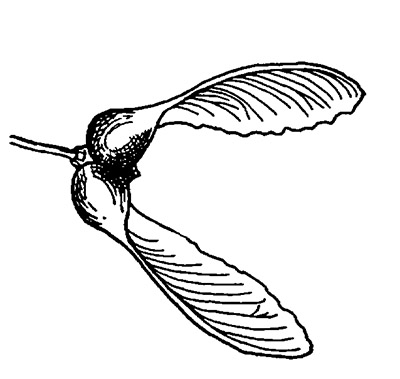
Sugar maples grow 60 to 75 feet tall and can be 40 to 50 feet wide, providing excellent shade with their full foliage.
Sugar maples produce maple sap, which can be used to make maple syrup. The yield of sugar maples is one of the highest among maple trees. The Morton Arboretum warns again pruning maps in the spring as they are ‘bleeders’ and will lose large amounts of sap. This species also is susceptible to leaf scorch, verticillium wilt, tar spot and anthracnose and can be affected by borers and cottony maple scale.
According to the Hardwood Lumber and Veneer Series, sugar maples naturally occur in the northeastern United States and southern Canada, reaching as far west as Missouri and Minnesota and as far south as Tennessee and back up the Appalachian Mountains to the Northeast.
Sugar maple is one of the hardest, most uniform grained and valuable species. Its hardness and ability to take a high polish and smooth finish and the white color of the sap wood has resulted in many specialty uses. However, due to color issues, white maple is one of the most difficult types of lumber that can be produced. The heartwood is light to darker brown with some red color.
Sugar maple is one of the best woods for shaping and boring and is rated as intermediate for planing and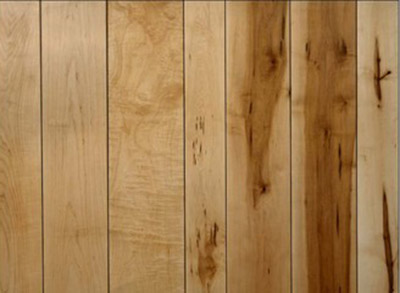 turning. The wood weighs 44 pounds per cubit foot, and is similar in weight and strength to oaks.
turning. The wood weighs 44 pounds per cubit foot, and is similar in weight and strength to oaks.
White hard maple is commonly used for high-end cabinets, furniture, architectural millwork, paneling and face veneer. Because of its hardness and uniform grain characteristics it is also commonly used for industrial, gymnasium and residential flooring. It was used for the front end or head of bowling lanes where the ball is typically dropped, and also can be used to make bowling pins, billiard cues, croquet mallets and balls.
Sugar maple is used in piano frames, in woodenware, shutters, spools, spindles, bobbins, turned items, butcher blocks, skewers, dowels and even toothpicks.
Other Resources:
Hardwoods of the Central Midwest: Sugar Maple
Hardwood Lumber and Veneer Series: Sugar Maple
Morton Arboretum: Sugar Maple
Purdue Plant Doctor
Native Trees of the Midwest
Shrubs and Woody Vines of Indiana and the Midwest
Investing in Indiana Woodlands, The Education Store
Forest Improvement Handbook, The Education Store
ID That Tree, Purdue Extension-Forestry & Natural Resources (FNR) YouTube playlist
Woodland Management Moment , Purdue Extension-FNR YouTube playlist
